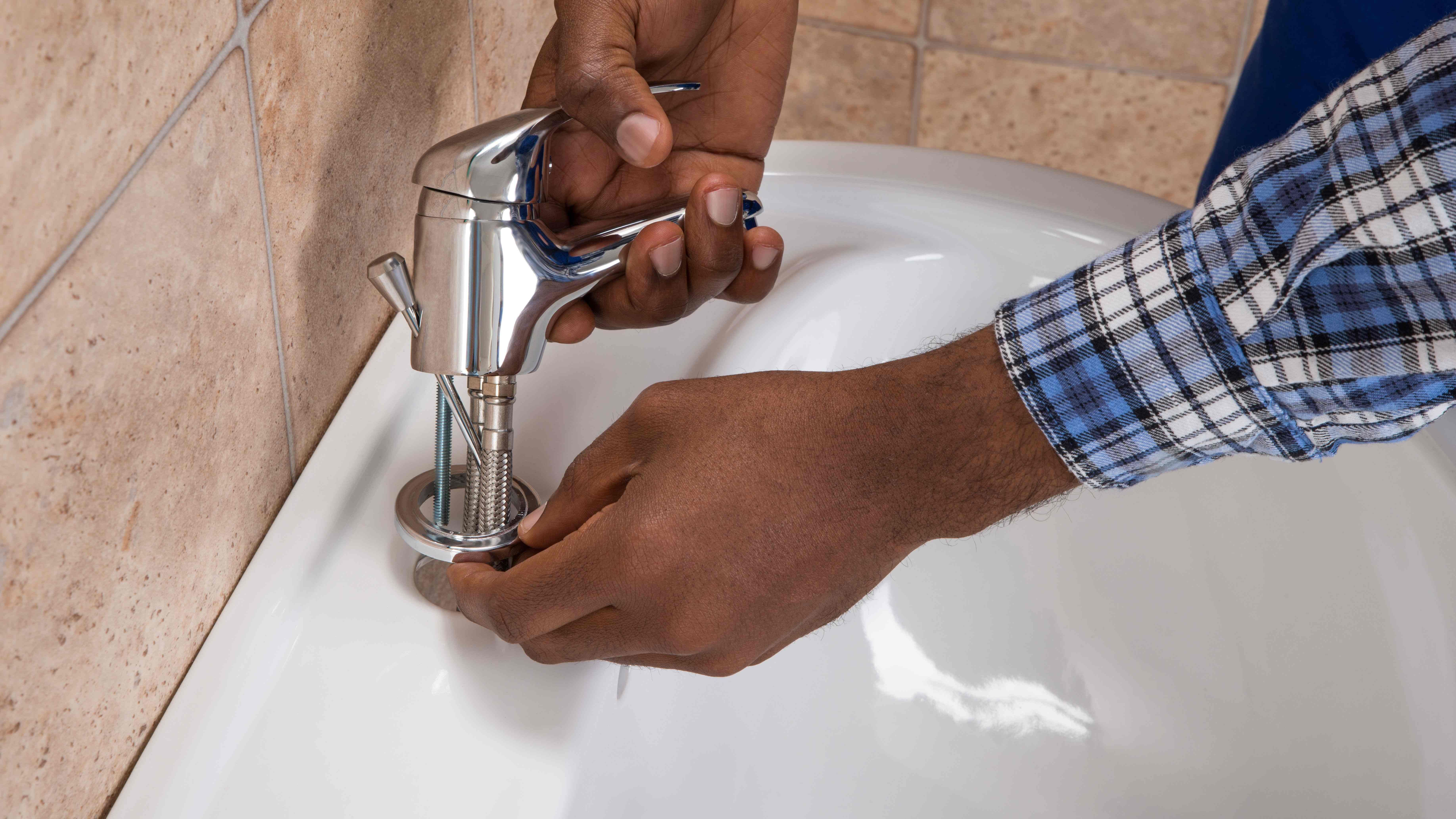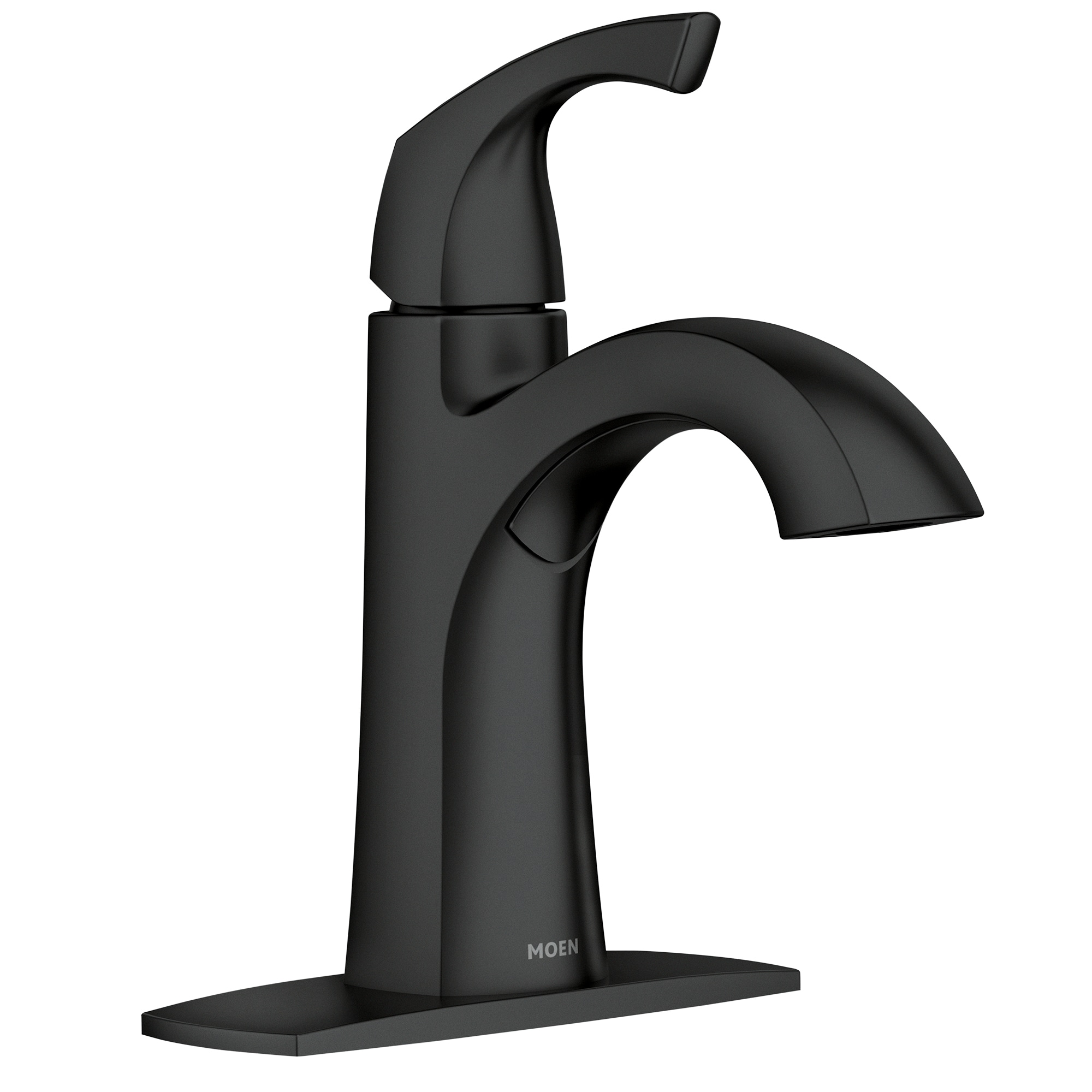Understanding Single Hole Bathroom Faucets

Single hole bathroom faucets offer a streamlined and modern aesthetic, enhancing the overall design of your bathroom. They are a popular choice for contemporary and minimalist bathroom styles, providing a clean and uncluttered look.
Single Hole Faucets vs. Other Types, Single hole bathroom faucet installation
Single hole bathroom faucets are designed to be installed in a single hole in the sink or countertop. This contrasts with other types of bathroom faucets, such as:
- Centerset Faucets: These faucets have three holes for installation, typically with a center hole for the spout and two side holes for the hot and cold water handles.
- Widespread Faucets: Widespread faucets feature a similar design to centerset faucets, but with a wider distance between the holes, typically 8 to 16 inches.
- Wall-Mounted Faucets: Wall-mounted faucets are installed directly on the wall, eliminating the need for holes in the countertop or sink.
Components of a Single Hole Bathroom Faucet
Single hole bathroom faucets consist of several key components that work together to provide a seamless and functional water flow:
- Spout: The spout is the primary component of the faucet, responsible for delivering water to the sink.
- Handle: The handle controls the flow of water, allowing you to adjust the temperature and volume.
- Cartridge: The cartridge is a crucial component that regulates the flow of water and controls the temperature. It typically contains ceramic discs that seal tightly to prevent leaks.
- Aerator: The aerator is a small component at the end of the spout that mixes air with water, creating a smooth and even flow. This helps reduce splashing and conserve water.
- Base Plate: The base plate is a decorative component that covers the hole in the sink or countertop and provides a smooth and finished look.
Preparation and Tools
Before embarking on the journey of installing a single-hole bathroom faucet, it is crucial to gather the necessary tools and prepare the workspace. This ensures a smooth and efficient installation process, minimizing the risk of complications and maximizing the chances of a successful outcome.
Safety Precautions
Safety is paramount during any home improvement project, especially when dealing with plumbing. Before starting the installation process, take the following safety precautions:
- Turn off the water supply to the faucet. Locate the shut-off valve for the bathroom sink and turn it clockwise until it stops. This will prevent water from spraying out while working on the faucet.
- Wear safety glasses to protect your eyes from debris or water splashes.
- Use a pair of work gloves to protect your hands from sharp edges or water.
- Ensure adequate ventilation in the bathroom to avoid inhaling fumes from any plumbing materials or cleaners.
Preparing the Existing Faucet
The existing faucet must be removed before installing the new one. This involves the following steps:
- Locate the faucet’s handle and turn it clockwise until it is fully closed.
- Using a wrench, loosen the nuts that secure the faucet to the sink. These nuts are usually located under the faucet or on the sides.
- Once the nuts are loosened, carefully lift the faucet up and away from the sink.
- If the faucet is connected to a pop-up drain, detach the pop-up rod from the faucet stem.
- Carefully remove the old faucet from the sink and set it aside.
Maintenance and Care: Single Hole Bathroom Faucet Installation

Just like any other valuable appliance in your home, your single-hole bathroom faucet requires regular care to ensure its longevity and optimal performance. By implementing a few simple maintenance practices, you can preserve its functionality and aesthetic appeal for years to come.
Routine Maintenance Tasks
A regular maintenance schedule can help prevent minor issues from escalating into major problems. Here’s a checklist of tasks to incorporate into your routine:
- Clean the faucet regularly: Wipe down the faucet with a soft, damp cloth to remove any dust, soap scum, or water spots. This simple act prevents the accumulation of dirt and grime that can dull the finish and hinder smooth operation.
- Inspect for leaks: Regularly check for leaks around the spout, handle, and base of the faucet. Even a small drip can indicate a problem that needs attention. Addressing leaks promptly can prevent water damage and save you money on your water bill.
- Lubricate moving parts: For faucets with moving parts, like lever handles, applying a small amount of silicone lubricant to the moving parts can help maintain smooth operation and prevent squeaking or sticking. This is particularly important for faucets that are frequently used.
- Clean the aerator: The aerator, located at the end of the spout, mixes air with water to create a smooth, consistent flow. Periodically unscrew the aerator and clean it with a toothbrush and vinegar to remove any mineral buildup that can restrict water flow.
Using Appropriate Cleaning Products
The choice of cleaning products can significantly impact the longevity of your faucet. Harsh chemicals and abrasive cleaners can damage the finish and accelerate wear and tear.
- Avoid abrasive cleaners: Scrubbing with abrasive cleaners like steel wool or scouring pads can scratch the finish and leave permanent marks. Opt for soft cloths and mild cleaning solutions instead.
- Use mild cleaning solutions: A mixture of warm water and dish soap is generally sufficient for cleaning most bathroom faucets. For stubborn stains, you can use a vinegar-based solution, but always test it on an inconspicuous area first to ensure it doesn’t damage the finish.
- Avoid bleach and ammonia: Bleach and ammonia can corrode metal surfaces, so it’s best to avoid using them on your faucet. Stick to gentle cleaners specifically designed for bathroom fixtures.
Preventing Mineral Buildup and Corrosion
Hard water can leave behind mineral deposits that can clog the faucet and hinder its performance. Corrosion, a gradual deterioration of the metal surface, can also occur over time.
- Use a water softener: If you have hard water, installing a water softener can significantly reduce mineral buildup and extend the life of your faucet. This device removes minerals from the water before it reaches your plumbing system.
- Clean the faucet regularly: Regular cleaning helps prevent mineral buildup from becoming a major problem. Wipe down the faucet after each use to remove any water spots or residue.
- Dry the faucet: After cleaning, dry the faucet thoroughly with a soft cloth to prevent water spots and mineral buildup. This simple step can make a big difference in maintaining the shine and functionality of your faucet.
